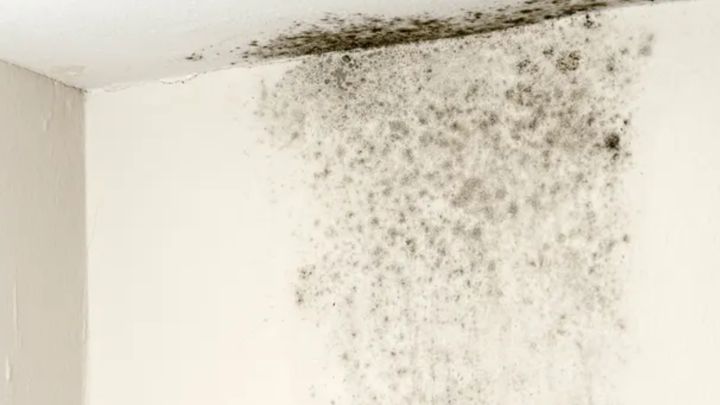
To live (and especially to rent) in the UK is to know way too much about black mould.
Citizen’s Advice UK says that “more than half” of UK renters are living with mould; government stats from 2021 say private rentals are just under six times more likely than owner-occupied houses (11% vs 2%) to suffer from the spores.
Anyone who’s ever gone to a landlord about the issue will have heard the same advice; “just clean it,” “open your windows” (even in the middle of winter), and “don’t leave clothes on the radiator” (even if there’s no tumble drier, and hanging clothes outside is banned) are all common refrains.
But if taking those measures isn’t working for you, there might be something bigger at play.
Why does mould always come back?
Just because mould isn’t visible doesn’t mean it’s not there; in fact, by the time the hyphae that cause mould have formed spores, they’ve already started to spread.
That’s why your home, which has had low humidity over the summer, can still grow mould in the winter.
“Even when water-damaged buildings and home contents dry out, the probability of those spores already having been dispersed within the home is really high,” Australian Broadcasting Company (ABC) said after speaking to mycologist Dr Cameron Jones.
In fact, one preventative measure many take to prevent the reappearance of mould ― turning the heating on ― can actually make it appear.
“When we turn our heaters on, any cold surfaces in the home — especially walls with rising damp issues — form condensation because there’s warm air indoors and cold air outside,” Dr. Jones told ABC.
Soft and uneven surfaces may hold onto hyphae for longer. For instance, a wooden bookshelf made up of multiple layers of wood might have spores between each layer that feed on the glue between sheets.
Cleaning items like those bookshelves simply will not get rid of the mould. Cleaning mould with standard products like bleach can’t help either ― mould inspection and testing company Markham Services says bleach “can never completely remove the mould because it only works to transform the hue to a white or clear tint.”
“Instead of solving the problem, you’ll have created an environment that encourages mould growth,” they add.
What can I do to banish it?
The spores won’t appear if your humidity is lower than 60%, so for minor mould, keeping high-moisture areas ― like laundry rooms, kitchens, and bathrooms ― aired out really can help.
It can also be helpful to leave a gap between furniture and walls, cover your pots while cooking, use an extractor fan, ensure you don’t leave wet items in your home for long, and wipe condensation from your windows daily.
For serious mould, though, the issue is likely due to structural issues like rising damp and leaking pipes, safe housing organisation Safeguard Europe says.
Black mould in particular “is often a sign of a serious problem in your home that needs to be thoroughly investigated.”
As Markham Services says, you would be amazed at how little the spores need to survive, even when dormant ― imperceptible deposits of human and pet cells, dust, dirt, and food are more than enough to keep them going.
If you’re living in a rental property, housing charity Shelter has a letter template you can send to your landlord to alert them of mould issues. They point out that you can contact your council for an environmental health inspection if you like.
If mould has made your home unfit to live in, your landlord is obliged to fix it; “They should not ban you from drying clothes indoors if your homes has no outside space,” Shelter adds.